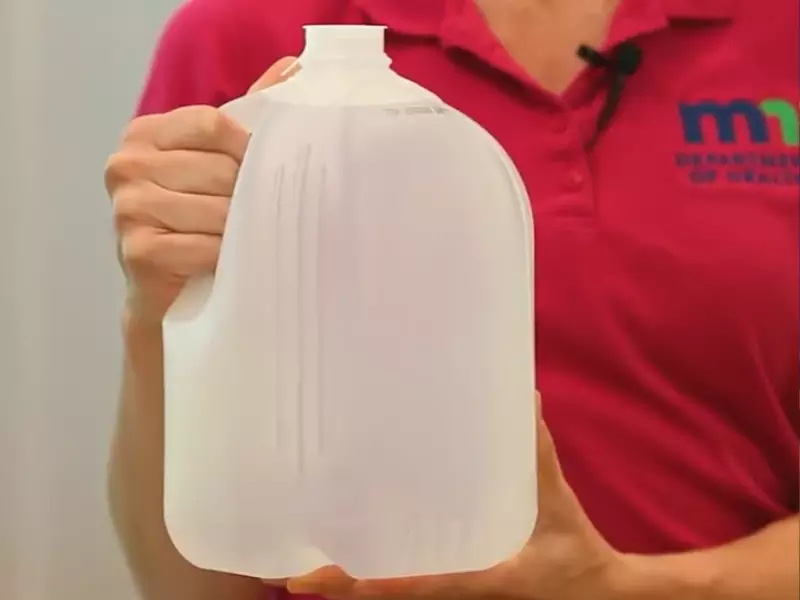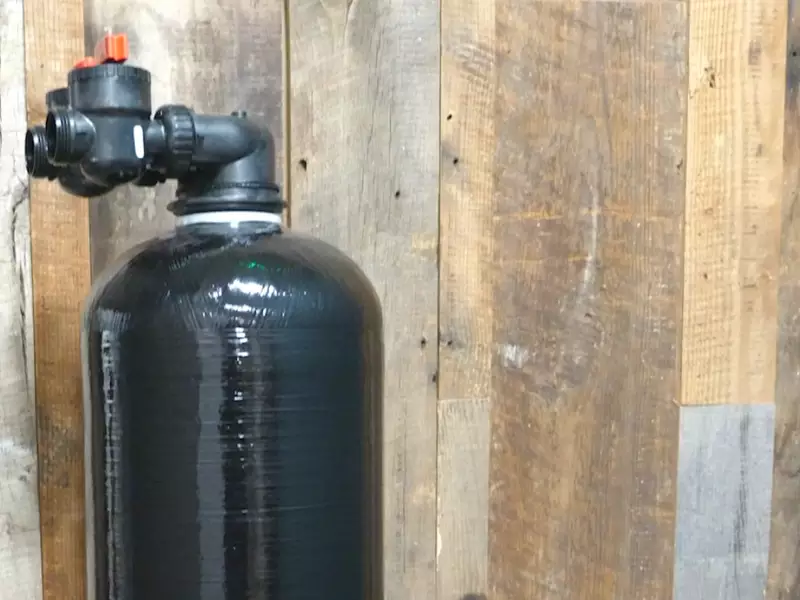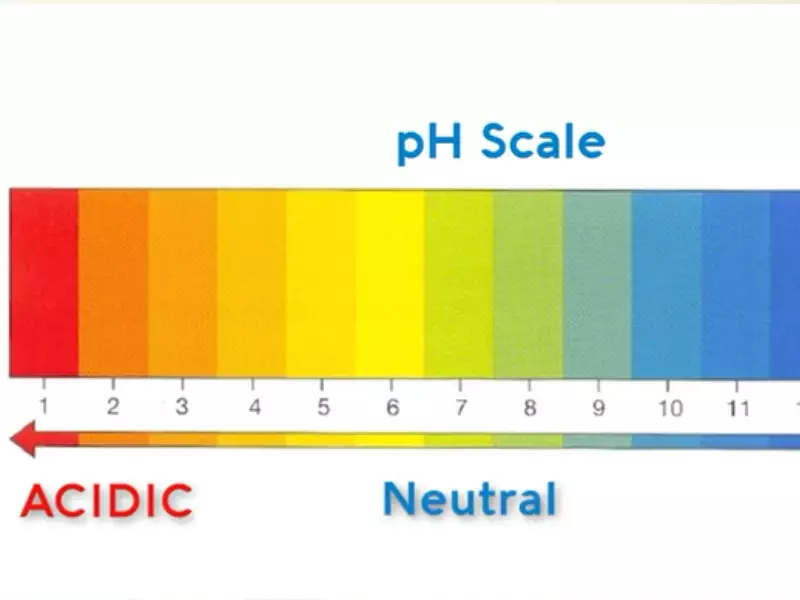The pH level of well water holds a pivotal place in the quality and safety of the water source. With the right pH balance, you can enjoy clean and contaminant-free water. However, when this balance veers towards acidity, a series of challenges arise.
Low pH in well water can lead to corrosive behavior, adversely affecting your plumbing and the water’s taste. But, with the right methods, this can be addressed, ensuring the water remains safe for consumption and general use. Well mechanics, like myself, with over 15 years of hands-on experience, have dealt with pH issues and recognize the importance of appropriate corrective measures.

Why pH Matters
pH, a scale ranging from 0 to 14, denotes the acidity or alkalinity of water. A neutral pH stands at 7, with numbers below indicating acidity and above pointing to alkalinity.
- Health implications: Acidic water can leach metals from pipes, leading to harmful compounds in your water. Long-term ingestion can lead to health risks.
- Taste and clarity effects: Acidic water can have a sour taste and may look murky or discolored.
- Impact on plumbing: Low pH can cause corrosion in your plumbing, leading to leaks and shortening the lifespan of your pipes.
Signs of Low pH
Well water with low pH can bring about subtle changes that might be initially overlooked. It’s vital to be aware of these signs to take appropriate action before the water causes significant damage.
Taste and Color Changes
Acidic water can manifest in various ways:
- Metallic Taste: This is often the first noticeable sign. A distinct metallic taste indicates the presence of excessive minerals, typically a result of the water’s acidity dissolving metal from the well’s components.
- Blue-Green Stains: On fixtures and fittings, especially around faucets and drains, you might observe blue-green stains. These are caused by copper pipes corroding due to acidic water.
- Cloudy Appearance: A hazy or cloudy appearance in water can also hint at a low pH, though other contaminants might also cause this.
Corrosion of Pipes
The corrosive nature of acidic water can inflict lasting damage:
- Frequent Repairs: One may find themselves calling the plumber more often due to leakages. If the cause isn’t identified and rectified, this can become a recurring problem, hitting one’s pocket hard.
- Pipe Replacement: Prolonged exposure to acidic water can lead to irreparable pipe damage, necessitating their replacement. This not only incurs a heavy cost but also disrupts the household.
- Visible Pitting: Over time, you might notice small pits or holes forming on exposed metal surfaces, a sure-shot sign of corrosion from acidic water.
Skin and Hair Implications
Though not as immediately obvious as other signs, long-term exposure during showers and baths can have effects:
- Itchy Skin: Post showering, if there’s consistent itching or a feeling of dryness, it could be due to the water’s low pH affecting the skin.
- Dull Hair: The natural shine and vitality of hair might diminish. This isn’t a mere cosmetic issue but indicates the potential harm being done to your scalp and hair follicles.
Lime Addition
Lime’s application as a pH balancer in well water is a well-established practice.
What is Lime?
Delving deeper into its origins and use:
- Origins: Lime, or calcium oxide, is derived from limestone, a naturally occurring sedimentary rock. Its properties make it an ideal neutralizing agent.
- Historical Use: Lime’s application dates back centuries. From purifying drinking water to being used in large-scale water treatment plants, its effectiveness is tried and tested.

Pros and Cons
Every method comes with its own set of advantages and drawbacks:
- Advantages:
- Availability: Lime is readily available and is one of the most economical methods.
- Natural Solution: Being a natural mineral, it doesn’t introduce harmful chemicals into the water.
- Drawbacks:
- Increased Hardness: Lime can raise the water’s hardness, sometimes requiring additional treatment to soften it.
- Sediment Formation: If not properly dissolved, lime can precipitate, leading to sediment at the bottom of the well.
Application Process
The efficacy of lime in rectifying pH imbalances hinges on its correct application:
- Determining Quantity: Based on the water’s current pH and volume, calculate the required lime quantity. Always err on the side of caution, as overuse can cause its own set of issues.
- Mixing: Lime should be thoroughly mixed with water to form a slurry before being introduced into the well.
- Monitoring: After application, regularly test the water’s pH. It helps in gauging the effectiveness and making necessary adjustments.
Baking Soda Technique
While lime and other methods are effective, sometimes a simple household item like baking soda can come to the rescue.
Benefits of Baking Soda
- Safety: Being a common kitchen ingredient, baking soda poses no health risks.
- Affordability: It’s budget-friendly, making it an attractive option for minor pH corrections.
- Ease of Application: Unlike some other methods, using baking soda doesn’t require extensive knowledge or specialized equipment.
Application Process
- Dissolution: Before adding to the well, ensure baking soda is completely dissolved in water.
- Dosage: Depending on the extent of pH imbalance and the well’s volume, carefully measure the baking soda quantity. It’s recommended to start with smaller amounts and gradually increase if necessary.
- Frequency: While baking soda is safe, it’s crucial not to overdo it. Monitor pH levels and apply as required.
Soda Ash Solution
A more potent cousin of baking soda, soda ash is often the preferred choice for more severe pH imbalances.
What is Soda Ash?
- Composition: Chemically, soda ash is sodium carbonate. Its alkaline nature makes it adept at combating acidity.
- Potency: It’s more concentrated than baking soda, meaning you need less soda ash to achieve the same pH correction.
The Difference from Baking Soda
- Chemical Structure: While both derive from the same chemical family, their structures differ. Soda ash is pure sodium carbonate, while baking soda has an additional hydrogen atom.
- Effectiveness: Due to its higher potency, soda ash can correct pH imbalances faster and in smaller amounts than baking soda.

Mixing and Application
- Preparation: Like with other methods, soda ash needs to be dissolved in water before introduction to the well.
- Precision: Given its potency, exact measurements are crucial. Overuse can swing the pH too far towards alkalinity, leading to a new set of challenges.
- Consistent Monitoring: Regularly test the water’s pH post-application. Adjust the soda ash dosage based on these results to maintain an optimal pH level.
Calcite Neutralizer Filters
An automated solution, calcite neutralizer filters offer a hands-off approach to maintaining the right pH balance.
Basics of the System
- How it Works: The central component of these filters is calcite, a form of crushed marble. As acidic water flows through the calcite, it dissolves enough to neutralize the acidity and raise the pH.
- Automatic Adjustment: The beauty of this system is its self-regulation. As the water’s acidity varies, the amount of calcite dissolved adjusts correspondingly, ensuring a consistent pH level.
Installation Process
- Location: Ideally, these filters are placed where the water enters the home, ensuring all water passing through is treated.
- Professional Installation: Given the complexities of plumbing and the need for precision, it’s advisable to have a professional.
Potassium Carbonate Application
A lesser-known but effective method is the use of potassium carbonate.
- Overview of potassium carbonate: It’s a white salt, soluble in water, and acts as a buffering agent.
- When and how to use: If testing reveals a severe pH imbalance, potassium carbonate might be the remedy. Dissolve it in water and introduce it to the well system.
- Possible side effects: Overuse might make the water overly alkaline, necessitating monitoring.
Comparing Costs
Selecting a method often boils down to costs.
- Initial investment: Filters might be costlier upfront but can offer long-term peace of mind.
- Maintenance expenses: Lime or soda ash might require more frequent interventions and monitoring.
- Long-term effectiveness: While filters have a recurring calcite cost, they ensure consistency in pH levels.
Safety Precautions
Maintaining the right pH is crucial, but safety shouldn’t be compromised.
- Importance of correct dosages: Over-correcting might make water too alkaline, presenting its own challenges.
- Monitoring pH changes: Regular testing ensures the pH stays within safe limits.
- Avoiding overcorrection: If using chemicals, always measure accurately and consult guidelines.
Frequently Asked Questions
Why is my well water acidic?
Rainwater absorbs carbon dioxide, forming a weak acid. As it seeps into the ground, it might become more acidic, especially in areas with decaying vegetation or certain rock types.
How often should I test my well water’s pH?
It’s advisable to test the pH annually. If you’re treating the water, you might want to do it more frequently to ensure effectiveness.
Can I mix methods for raising pH?
Yes, but always consult a professional before mixing methods to ensure compatibility and effectiveness.
Conclusion
Maintaining the right pH in well water is a blend of science and diligence. With myriad methods available, each has its own merits and challenges.
Selecting the right one depends on the severity of the pH imbalance, budget constraints, and personal preferences. Remember, a balanced pH ensures not only the longevity of your plumbing but also the safety of your drinking water.